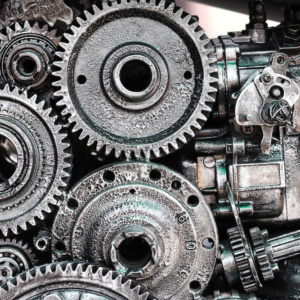From factories to schools to offices, nearly all buildings contain some type of mechanical equipment. While necessary to keep operations running smoothly, mechanical equipment tends to generate a lot of excess noise. These types of machines vibrate as they operate, creating a type of noise that can be both heard and felt by building occupants. This is because vibrations move from the machines to various building elements, traveling throughout the building’s structure and spreading noise as they go.
Constant vibrations rumbling in the background make for a distracting environment in which employees and students have difficulty focusing and are therefore less productive than they could be. This common noise problem can be resolved with soundproofing techniques like sound isolation. In this case, sound isolation means separating the offending equipment from the building’s structure in order to prevent vibrations from being transmitted from the machine to structural elements. Resilient mounts can be used for this purpose by isolating vibrating machinery from the building’s structure. This solution works best when equipment is located close to columns or load-bearing walls, as these structures offer better support for the resilient mounts.
Effective Tools for Isolating Vibrating Machinery or Equipment
- Steel Springs rated for enough static deflection for the equipment
- Neoprene waffle pads to remove direct hard mounts between equipment and structure
- Housekeeping concrete pads to add inertial mass below the equipment
Once equipment is effectively decoupled from the slab, also consider increasing the STC of the equipment room walls. This is often an ideal application for resilient channel (since there will be no tenants to ground the drywall later on), or a soundproofing vinyl.
Typically, mechanical equipment is bolted directly to the floor, allowing vibrations to easily jump from the machine and attach to structural elements, sending additional vibrations throughout the entire building. By relocating this type of equipment so that it can be mounted to a column or load-bearing wall with a resilient mount, structure-borne noise can be diminished. While machinery treated in this manner will still project some amount of airborne noise, the removal of the structure-borne noise is typically enough to render the remaining airborne noise unnoticeable.
Noise from mechanical equipment may seem impossible to resolve, but with the proper soundproofing techniques, the noise problem can be eliminated without much interruption to the building’s daily use. If you’re concerned about mechanical noise becoming an issue in one of your projects, reach out to Commercial Acoustics to learn more about resolving this type of noise problem.



